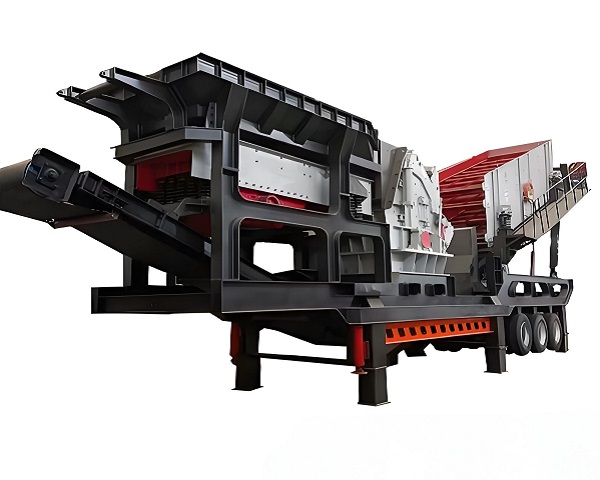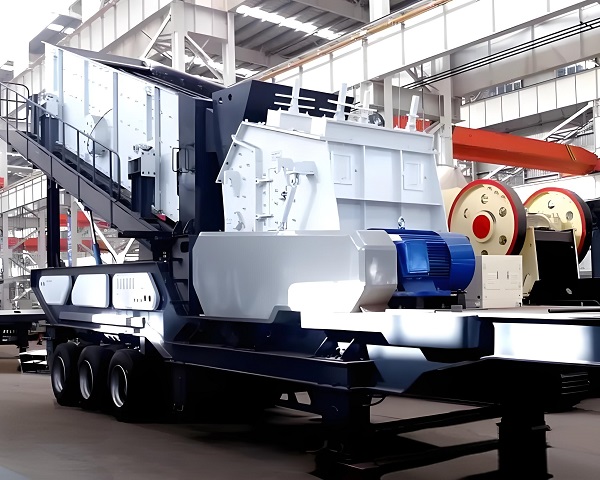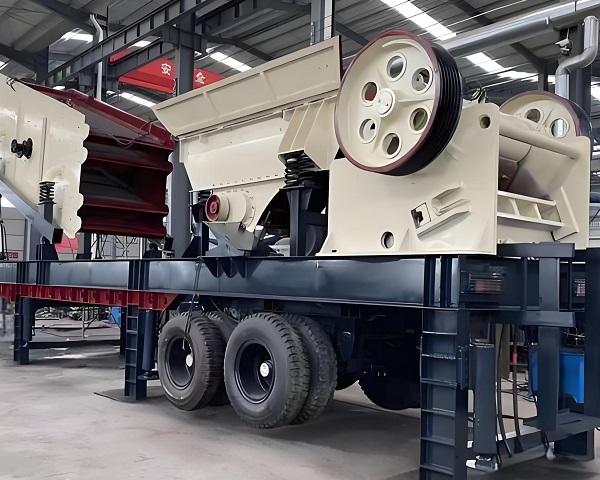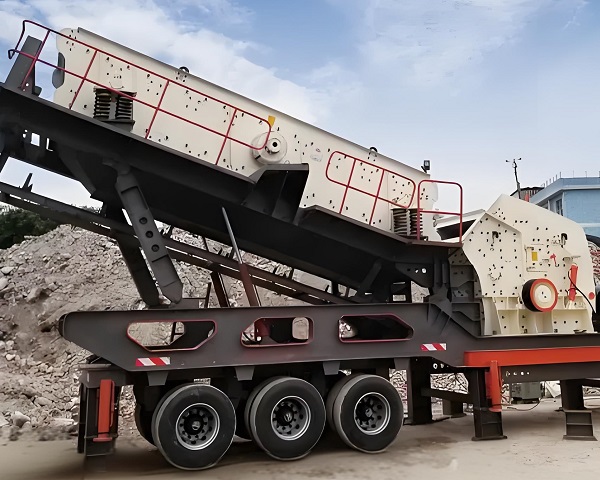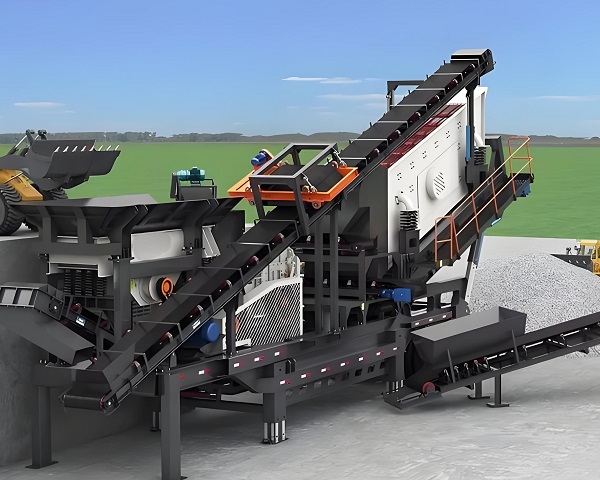A Trommel Screen is a rotary drum screening machine widely used in waste processing, mining, and construction industries. It efficiently separates materials by ......
What is the Mobile Crushing Screening Station
Mobile Crushing & Screening Station Comprehensive Introduction
1. Equipment Definition
Mobile Crushing & Screening Station is an intelligent production line equipment that integrates crushing, screening and conveying functions. It adopts tire or crawler mobile chassis and can be quickly deployed in different sites such as mines, construction sites, demolition sites, etc. to realize the integrated operation of on-site crushing + grading and screening of materials.
2. Core Components
Crushing host: optional jaw crusher, impact crusher, cone crusher, etc., suitable for materials of different hardness (such as rock, concrete, construction waste).
Screening system: multi-layer vibrating screen (single/double/three layers), output finished materials according to particle size classification (such as 0-5mm, 5-10mm, 10-20mm).
Feeder: uniform feeding to prevent blockage.
Conveyor belt system: link various modules to automatically convey materials.
Power unit: diesel engine or external power drive, some models support hybrid power.
Intelligent control system: PLC+touch screen, real-time monitoring of production, equipment status, fault alarm, etc.
3. Main types
Crawler mobile station: adapt to complex terrain (mountains, wetlands), no need for transport vehicles, but the cost is high.
Tire mobile station: relies on tractor transfer, suitable for flat sites, low price, convenient transportation.
Combined unit: flexibly match "crushing + screening" modules according to needs (such as crushing first and then screening, or only screening).
4. Core advantages
Flexible transfer: no fixed infrastructure is required, and it can be put into production quickly after arriving at the site, which is particularly suitable for short-term projects or decentralized operations.
Reduce costs: materials are processed on site to reduce transportation costs (such as construction waste does not need to be transported to a fixed crushing plant).
Efficient and intelligent: automated processes reduce manual intervention, and some models support remote monitoring and intelligent adjustment of crushing parameters.
Environmental compliance: closed design + dust removal and noise reduction technology to meet environmental emission requirements.
Versatility: by replacing the host or screen, it can handle a variety of materials such as rocks, ores, concrete waste, asphalt blocks, etc.
5. Typical application scenarios
Mining: primary crushing and grading of ores such as granite and limestone.
Construction waste recycling: crushing and screening of concrete and bricks, and recycled aggregates for roadbed filling.
Sand and gravel aggregate production: sand making and grading of river pebbles or blasting stones.
Road construction: screening and reuse of old asphalt pavement after crushing.
6. Industry development trend
Electrification: pure electric or hybrid models reduce carbon emissions and are suitable for urban operations.
Modular design: quick replacement of crushing host or screening module to meet diverse needs.
Intelligent upgrade: AI algorithm optimizes crushing efficiency, and 5G remote operation and maintenance reduces labor costs.
Lightweight materials: reduce equipment weight, improve mobility and energy efficiency.
7. Purchase suggestions
Select the model based on material characteristics (hardness, humidity), production capacity requirements (50-500 tons/hour), and site conditions (topography, power supply). For example:
Processing high-hardness rock → Choose the "crawler + cone crusher" combination.
Construction waste recycling → Choose the "impact crusher + multi-layer screen" model, equipped with an iron remover.
Mobile crushing and screening stations have become the core equipment for modern sand and gravel aggregate production and solid waste resource utilization due to their high efficiency, flexibility and environmental protection. Future technological iterations will further promote their application in green mines and circular economy.
Operating principle of Mobile Crushing Screening Station
Mobile Crushing Screening Station is a mobile production line equipment that integrates crushing equipment, screening equipment, conveying equipment, etc. It is widely used in mining, construction waste treatment, highways, railways, water conservancy and other fields. Its working principle is as follows:
A. Overall structure composition
Mobile crushing and screening stations usually include the following main parts:
1. Feeding system (Vibrating Feeder)
Feed the raw materials evenly into the crusher.
2. Crushing equipment (Crusher)
You can choose jaw crusher, impact crusher, cone crusher, etc., configured as needed.
3. Screening equipment (Vibrating Screen)
Classify and screen the crushed materials.
4. Conveying system (Belt Conveyor)
Responsible for the transportation of raw materials and finished products.
5. Power device and control system
Power is provided by generator sets or motors, equipped with PLC or remote control system.
6. Chassis and mobile device
Crawler or tire type, which can achieve rapid transfer.
B. Working Principle
The whole working process can be divided into the following stages:
1. Loading
The original materials (such as stone, construction waste, etc.) are fed into the feeder by a loader or excavator.
2. Coarse Crushing
The feeder evenly feeds the materials into the coarse crushing equipment (such as a jaw crusher) to perform primary crushing of large pieces of materials.
3. Intermediate and fine crushing (optional)
If a secondary crushing equipment (such as an impact crusher or a cone crusher) is configured, the materials after primary crushing will further enter the intermediate and fine crushing stage.
4. Screening
The crushed materials enter the vibrating screen for screening and are divided into several specifications of finished materials according to the particle size.
5. Output and stacking
Qualified finished materials are output and stacked by belt conveyors; unqualified materials are returned to the crusher for secondary crushing (closed-loop circulation system).
Advantages and features of Mobile Crushing Screening Station
Mobile crushing and screening station is a kind of efficient equipment that integrates crushing, screening, conveying and other functions on a movable platform. It is widely used in construction waste treatment, mining, road and railway construction, water conservancy projects and other fields. Compared with traditional fixed crushing production lines, mobile crushing and screening stations have obvious technical and economic advantages, which are mainly reflected in the following aspects:
1. Flexible mobility and convenient transfer
The mobile crushing and screening station adopts a tire or crawler chassis design, which can be put into use quickly without complex infrastructure. It has strong mobility and is suitable for variable or scattered work sites, especially for field mining, temporary projects and construction sites, which can significantly save material transportation time and cost.
2. Compact structure and high integration
The equipment integrates feeding, crushing, screening, conveying and other systems into one unit, with a small footprint and reasonable layout. No additional crushing workshop or infrastructure is required, which shortens the construction period, is suitable for rapid deployment, and greatly improves the efficiency of project startup.
3. Diverse configurations and strong adaptability
The mobile crushing and screening station supports modular configuration, and can flexibly select main equipment such as jaw crusher, impact crusher, cone crusher and vibrating screen according to different material properties and production needs. It is suitable for a variety of materials such as granite, limestone, river pebbles, construction waste, etc., to achieve multi-level processing from coarse crushing, medium crushing to fine crushing.
4. Easy operation and intelligent control
Most equipment is equipped with an automated control system, which can realize one-button start and stop, fault alarm, remote monitoring and other functions, reduce the difficulty of manual operation, and improve production safety and stability. At the same time, it is easy to maintain and reduce downtime.
5. Energy saving and environmental protection, green production
The equipment can be equipped with environmental protection facilities such as dust collectors and spray systems to effectively control dust and noise, in line with national environmental protection requirements. At the same time, on-site crushing reduces material transportation, reduces carbon emissions, and helps green and low-carbon production.
6. Economical and efficient, fast return on investment
Compared with fixed crushing production lines, mobile crushing and screening stations have less initial investment and a short installation period, and can be quickly put into production, bringing benefits. Its high efficiency and high flexibility are also suitable for various business models such as contracting and leasing, which can improve equipment utilization and economic value.
Mobile crushing and screening stations are becoming an ideal choice for modern mining and engineering construction with their high efficiency, flexibility, environmental protection and intelligence, and are particularly suitable for enterprises and projects that pursue high efficiency, low cost and sustainable operation.
Technical Parameter Table of Mobile Crushing Screening Station
| Model | Main Crusher | Max Feed Size | Output Size Range | Capacity (t/h) | Screening Equipment | Screen Layers | Screen Size Range | Installed Power (kW) | Power Supply |
|---|---|---|---|---|---|---|---|---|---|
| MCS-80J | Jaw Crusher PE400×600 | ≤350 mm | 40–100 mm | 30–80 | 3YK1237 | 3 Layers | 0–5, 5–20, 20–40 mm | 75 | Diesel / External Power |
| MCS-100J | Jaw Crusher PE600×900 | ≤500 mm | 65–160 mm | 50–200 | 3YK1548 | 3 Layers | 0–5, 5–20, 20–40 mm | 110 | Diesel / External Power |
| MCS-150F | Impact Crusher PF1210 | ≤350 mm | 0–60 mm | 70–250 | 3YK1860 | 3 Layers | 0–5, 5–20, 20–40 mm | 132 | Diesel / External Power |
| MCS-200C | Cone Crusher HP200 | ≤300 mm | 0–50 mm | 100–300 | 4YK2160 | 4 Layers | 0–5, 5–15, 15–25, >25 mm | 160 | Diesel / External Power |
| MCS-300F | Impact Crusher PF1315 | ≤450 mm | 0–60 mm | 150–400 | 4YK2460 | 4 Layers | 0–5, 5–20, 20–40, >40 mm | 200 | Diesel / External Power |
If you have any special requirements, we will customize according to your special needs.
Product Picture Display of Mobile Crushing Screening Station
FAQ about Mobile Crushing Screening Station
>1. What are the core functions of a mobile crushing and screening station?
The mobile crushing and screening station integrates crushing, screening and conveying functions, and can directly complete the whole process from raw materials to finished products at the operation site. Its core functions include: primary crushing (jaw crusher), secondary crushing (impact crusher/cone crusher), multi-stage screening (3-4 layers of vibrating screen), automatic conveying (with iron removal device) and intelligent control system, achieving a one-stop processing capacity of 50-500 tons/hour, which is particularly suitable for engineering projects that require frequent transfers.
>2. How to choose between crawler and tire models?
The crawler type adopts hydraulic drive, with a climbing ability of 25°, which is suitable for complex terrains such as mountains and wetlands, but the price is 30-40% higher; the tire type requires tractor transportation, is suitable for flat sites, and has a faster transfer speed (60km/h vs crawler type 1km/h). When choosing, you need to consider: if the terrain slope is greater than 10°, choose crawler type; if the number of annual transfers is greater than 20 times, choose tire type; if the budget is limited and the operation is fixed, choose tire basic model.
>3. How does the equipment handle high-hardness materials (such as granite)?
For materials with Mohs hardness ≥7, a combination of cone crusher (laminated crushing principle) + wear-resistant manganese steel screen (life extended by 3 times) should be configured. Key parameters: standard crushing chamber type, spindle speed 300-350rpm, hydraulic system pressure setting 16-18MPa, and real-time bearing temperature monitoring (warning value 85℃), which can handle hard rock with compressive strength ≤350MPa.
>4. What special configurations are required for construction waste treatment?
Three additional configurations are required: ① Rebar shearing device (handling rebar with a diameter of ≤30mm) ② Light material separator (removing wood/plastic) ③ Adjustable frequency pre-screening (separating slag). Typical process: impact crusher (rotor speed 45-55m/s) + double-layer screen (upper screen hole 50mm, lower layer 10mm), the impurity content of recycled aggregate can be controlled at ≤3%.
>5. What practical functions does the intelligent control system have?
The intelligent system includes: ① Load adaptive adjustment (feeding amount ±5% accuracy) ② Remote diagnosis (4G/5G transmission) ③ Wear warning (screen remaining life display) ④ Production statistics (measured by particle size classification) ⑤ Fault self-check (63 fault code libraries). The operation interface supports 10 language switching, and the data can be exported in Excel format.
>6. How to solve the screening blockage of wet materials?
Recommended solution: ① Use polyurethane screen (opening rate increased by 20%) ② Increase vibration acceleration to 5-6g ③ Install a rotating brush device (speed 15-20rpm) ④ Hot air system (40-60℃ drying). For sticky soil, 1-2% lime powder can be added at the feeding end to improve material fluidity.
>7. How to ensure the environmental performance of the equipment?
Through five measures: ① Closed structure (coverage ≥ 90%) ② Pulse dust removal (emission ≤ 20mg/m³) ③ Diesel engine DPF post-treatment (in line with National IV standard) ④ Noise package (72dB@15m) ⑤ Oil-water separation device (leakage collection rate 100%). The electric model can achieve zero emissions, but it needs to be equipped with a 400V/50Hz power supply.
>8. What are the key points of daily maintenance?
Maintenance items that must be performed: ① Check the hydraulic oil level every 8 hours (temperature < 65℃) ② Lubricate the vibration bearing every 50 hours (using EP2 lithium-based grease) ③ Clean the dust filter every 100 hours (pressure difference < 1500Pa) ④ Replace the crusher liner every 500 hours (when the wear amount is > 30%). The intelligent system will automatically generate maintenance reminders.
>9. What factors affect the equipment capacity?
Main influencing factors and countermeasures: ① Material hardness (for every 50MPa increase in compressive strength, the output decreases by 15-20%) ② Moisture content (pretreatment is required when >8%) ③ Feed uniformity (fluctuation should be controlled within ±10%) ④ Screen inclination (for every 1° increase, the output increases by 2-3%) ⑤ Voltage stability (fluctuation needs to be ≤±5%).
>10. What is the future direction of technological development?
Five major trends: ① Pure electrification (equipped with 300-500kWh battery pack) ② Digital twin (virtual debugging technology) ③ AI optimization (real-time adjustment of crushing parameters) ④ Quick module change (replace the host in 15 minutes) ⑤ Carbon fiber application (weight reduction of 20%). It is expected that L4 autonomous unmanned units will appear in 2026.


























